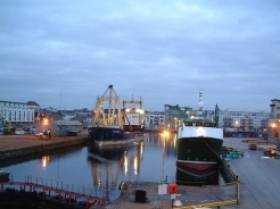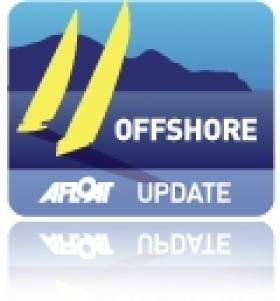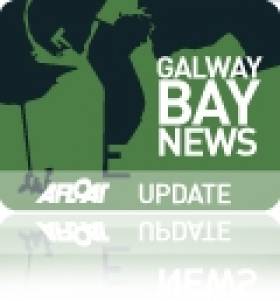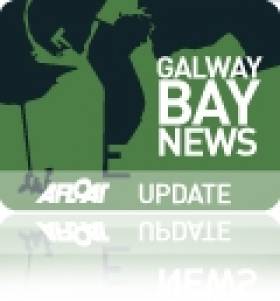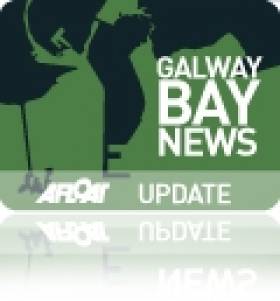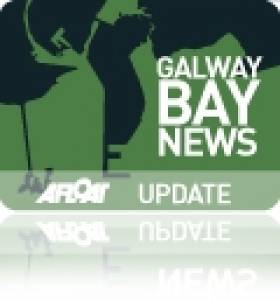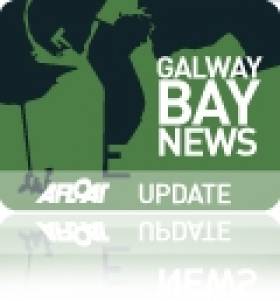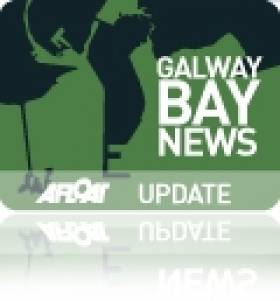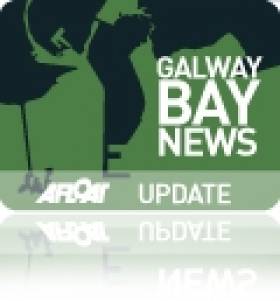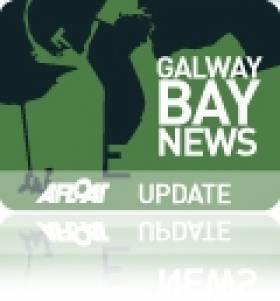Displaying items by tag: Galway Harbour Company
Exclusion From EU Fund Brings Uncertainty For Galway Harbour
#Exclusion - The only port in Ireland to be excluded from a special EU fund is Galway Harbour and it’s future could be in jeopardy unless the situation is tackled, reports Galway Bay FM.
CEO of Galway Harbour Eamon Bradshaw says that the recent downgrade of the facility to a Port of Regional Significance means it does not quality for European funding.
He says that only ports classified as tier one or tier two facilities are entitled to assistance from the Ten-T Connecting Europe programme – assistance that the Port urgently needs. For more click here.
Plan for Docks Could Spark Regeneration of Galway
#GalwayPortPlan – The Connacht Tribune reports that the decision on Galway Harbour on the proposed redevelopment of the docks will be announced by An Bórd Pleanála next Friday, September 11.
The planning appeals board has been deliberating on plans for the €126 million redevelopment of the docks since an oral hearing took place in January.
The proposal has the potential to transform the face of Galway into the next century, according to proponents of the projects. The 85.4 hectare project, which is expected to take eight years to construct, will be built in four phases.
For more on the proposed expansion of the mid-west port, click this link.
Note the newspaper has a photo of the harbour showing leisure craft and commercial shipping sharing the port's Dún Aengus Dock.
On the right side can be seen the stern of the aptly named Galway Fisher, an oil products tanker that regularly calls to the port which requires a very skillful approach (see video) through the dock chamber.
Biggest Cruise Caller to Galway Harbour Visits Busy Season
#BiggestCaller – Crystal Symphony at 51,044grt is the biggest caller in tonnage terms to Galway Harbour this cruise season, yet her passenger capacity was surpassed by Thompson Spirit which called earlier this summer, writes Jehan Ashmore.
The 922 capacity Crystal Cruises operated vessel marks the sixth caller out of a total eight to include the 1,350 Thompson Spirit in May, making 2014 one of the busiest for Galway Harbour Company in recent years.
The mid-west port has proposed plans for a new port further out in Galway Bay to allow much larger cruiseships to dock. For further details visit their website HERE.
Crystal Symphony this morning anchored off Galway Harbour, close to Mutton Island having made as previously reported another anchorage call yesterday off Mouvile, Co. Donegal close to Greencastle on Lough Foyle.
It may be nearing the end of August, but the season continues as German operator, Phoenix-Reisen makes an appearance next Sunday with their Artania (44,348grt)
The one-time Royal Princess is due at the end of the month with a capacity of 1,260, making her the third largest caller of passengers.
At the other end of the spectrum, Club Med Cruises striking looking five mast sail-assisted Club Med 2 (14,983grt) with only 386 guests is scheduled to end the season in early September.
Galway Harbour Set for Busiest Cruise Season in Recent Years
#GalwayCruiseCalls-Galway Harbour Company is to have one of the busiest cruise seasons in recent years with the Norwegian owned expedition cruise ship Fram, which is to anchor offshore next Wednesday, writes Jehan Ashmore.
Fram is unique within the operations of Hurtigruten, as unlike her fleetmates, the expedition cruiseship does not serve along the Norwegian fjords on the daily service linking coastal communities in the combined role of car-ferry, cruiseship and cargoship.
Instead the forthcoming visitor to Galway is however more accustomed to exclusively 'cruising' deeper into the Arctic and Antarctic circles and also not to navigating to the rather more temperate climate of Galway.
Commenting to Afloat.ie, Captain Brian Sheridan, Galway Harbour Company Harbourmaster said, "the Fram will be the first of 8 cruise ships in 2014 which is the largest number of cruise ships in recent years, culminating on the 27 August with the arrival of the 6 star cruise ship Crystal Symphony".
Holland American Line's Prinsendam is returning to Galway again in 2014 after her call this summer. HAL was a regular caller to Galway in 1939 and when in total 56 calls were made. Prinsendam which is the smallest of the fleet, will however make up for generating a bigger presence when it comes to placing Galway on the global cruise map by another call to the City of the Tribes in 2015.
This call of Prinsendam will form a hat trick visit by the cruiseship to the mid-western seaboard port and that been served by one of the world's oldest cruise lines.
In addition to the constantly changing cruise scene, Thompson Cruises, P&O Cruises and Club Med are all new comers to Galway Harbour in 2014, which adds another significant milestone and boost in confidence to the port and that of the city.
The harbour company has development plans to extend land for a new outer port and asides improving cargo-handling operations will permit larger deep drafted cruiseships to dock alongside quays instead of anchoring offshore.
For further details visit the harbour company's dedicated port extension plans website HERE.
Galway Port Expansion '99 Per Cent Ready To Go'
#GalwayHarbour - Plans for the expansion of Galway Harbour are "99 per cent ready to go", as the Galway Independent reports.
Eamon Bradshaw, CEO of the Galway Harbour Company, said that the application for the new development would be submitted by the end of June.
As previously reported on Afloat.ie, the scheme will be the first Irish project lodged under new legislation that provides for planning permission on the grounds of "overriding public interest".
Bradshaw says that the necessary Natura Impact Statement has been completed, and economic and financial details were now being finalised for the redevelopment project at the harbour, recently recognised by the Government as a 'port of regional significance'.
Should it get the go-ahead from An Bord Pleanála, the new harbour will extend almost 1km out to sea with 660m of quay berth and plenty of space for cargo and container ships, oil tankers, fishing vessels and passenger ships.
The project will be completed in four phases, with the first €50 million phase extending the port by some 57 acres to accommodate a greater number of commercial ships and modern cruise liners.
Galway City Council recently granted extra time to the Galway Harbour Company for pre-expansion demolition works in the docks area.
The Galway Independent has much more on the story HERE.
Galway Harbour Co Gets Extra Time for Pre-Expansion Works
#GalwayPort - Galway Bay FM reports that the Galway Harbour Company has been given extra time by city councillors for the demolition of buildings in the docks area to make way for the upcoming port expansion.
Planning permission was granted five years ago for the removal of the Centre Pier building, which had been earmarked at the time as the location for a media centre for last summer's Volvo Ocean Race finale.
Now the Galway Harbour Company has three more years as it seeks further planning permission for the first phase of its expansion plans, as previously reported on Afloat.ie.
'Fast-Track' On Cards For Revived Galway Port Development Plans
#GalwayPort - Revived plans for the €200 million redevelopment of Galway Port may take a great leap forward in the next few weeks with the publication of a new policy document by the Minister for Transport.
The Galway City Tribune reports that Minister Leo Varadkar will release a 'Port Policy Statement' containing key recommendations for a development planning application to be made under IROPI (Imperative Reasons of Overriding Public Interest) legislation.
As previously reported on Afloat.ie, plans for a new deeper port in Galway Harbour were revived in August 2012 as harbour bosses sought to exercise a clause in the EU habitats directive.
Galway Harbour Company chief executive Eamon Bradshaw said at the time that the company was taking a new route after examining previous planning applications involving sensitive habitats.
He pointed out that under article 6.4 of the EU habitats directive, applications for projects classified under IROPI legislation allow developers to compensate for any infringement on sensitive habitats by restoring an area of a similar size in a different location.
It's now expected that the IROPI 'fast-track' will be approved if the Galway Harbour Company can prove that the port will have a significant economic benefit to bot the region and Ireland as a whole.
The Galway City Tribune has much more on the story HERE.
'Dangerous' Steel Piles in Corrib as Galway Harbour Reports Losses
#GALWAY BAY NEWS - The Connacht Sentinel reports that a series of steel piles in the River Corrib in Galway city centre are to be removed over concern at the danger posed to canoeists and kayakers.
The eight stanchions, which were installed at the mouth of the Corrib as part of the support structure for the temporary pedestrian bridge across the river during the Volvo Ocean Race finale last month, will be removed "as soon as possible" according to Galway City Council.
A spokesperson for the council said race organisers Let's Do It Global had encountered difficulties removing the steel piles from the stretch of water between the Spanish Arch and Claddagh Quay due to "unfavourable tides and poor weather".
Meanwhile, the Galway Harbour Company has declared that it made more profit from its car parking operation than from harbour activities.
Galway Bay FM reports that the company's accounts for 2011 show that more than 50% of its income is derives from car parking and rent.
Overall the harbour operator saw an 8% fall in revenue on the previous year, with a disappointing 18% drop in throughput. No comment has yet been made on these figures.
#GALWAY HARBOUR - Galway Harbour management are looking forward to the prospect of Chinese investment in the port's redevelopment plans, the Galway Independent reports.
“Chinese investors clearly recognise not only the massive potential of ocean tourism, but also the specific potential for Galway as a destination port for cruise liners," said Fine Gael TD Brian Walsh, referring to discussions between the Government and Chinese officials in Beijing last week.
As previously reported on Afloat.ie, Galway Bay can expect to welcome at least nine cruise visits thus year, with the first scheduled to arrive late next month.
Walsh added: "Galway is an incredibly attractive city, and if we can make it accessible to the major players in the cruise-line market, the impact on the local economy would be immense.”
Galway Harbour Company CEO Eamon Bradshaw said that the port project had "illicited quite a bit of interest" when the company presented at the recent Chinese-Ireland Relations conference at NUI Galway.
"We’re confident that we do have a lot to offer and we are confident that an investor will come on board."
The Galway Independent has more on the story HERE.
Three’s A Crowd as Naval, Research and Cargo Ships Dock In Galway
Also sharing the basin but located closer to the dock gates was Arklow Shipping Ltd's Dutch registered dry-cargo vessel Arklow Surf (2000/2,316grt). The dock is capable of handling more vessels simultaneously and of course used as a host-port of the high-profile Volvo Ocean Race which is due to return next year.
Galway and neighbouring Limerick City with its Ted Russell Dock, are the only dock-gate accessed ports on the island of Ireland. In the case of Galway there is an exception as freight operations are also available from an outer pier on the seaward side of Dún Aengus Dock though only for domestic purposes. From this pier the dedicated Aran Islands freight service is operated by Lasta Mara TEO's Blath na Mara (1983/330grt). As for Limerick, vessels can also berth outside the dock but they tend to be small port-work related craft that use the outer berth on the Shannon Estuary.
The Galway Harbour Company in recent years have proposed plans for a new outer port, to be built in four stages with a completion date set for 2017. This would enable larger deeper drafted vessels such as tankers and cruiseships to dock in the new port. In the meantime cruiseships anchor off Mutton Island. In addition a freight rail-link, berthing for an inshore fishing fleet and a 216 berth marina are proposed.
To read more about the port proposals visit http://www.galwayharbour.com/news.php?id=11and for aerial visual impressions click HERE.
- River Shannon
- Marine Institute
- naval service
- Ports and Shipping
- Arklow Shipping Ltd
- Ports and Shipping News
- Aran Islands
- Island News
- Galway Bay News
- Marine Science News
- Dun Aengus Dock
- Galway Harbour Company
- Cruise Liner news
- Cruise ships
- Galway Harbour and Bay news
- Ted Russell Dock
- Marine Instistute Research vessels
- Lasta Mara TEO


























